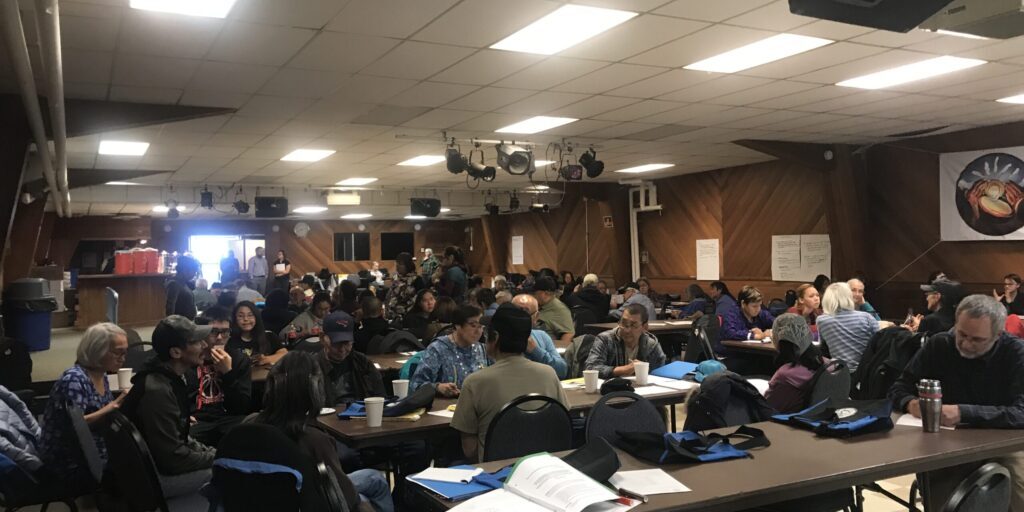Tribes in the Bering Strait region are working to re-establish control of public safety in their communities, using tools like tribal courts. This week tribes from around the region met in Nome to talk about what tribal justice could look like for them.
KNOM’s Emily Hofstaedter reports on Kawerak’s first Tribal Justice Summit:
Meghan Sigvanna Topkok is a staff-attorney at Kawerak and spent about a year organizing the three-day summit. She says the tribal justice summit’s goal was to help tribes understand what their options are for building a tribal court.
“We’ve also had a lot of people bring up the idea of also doing a regional tribal court or developing a sub-regional model or even if we did an appellate regional court which I think really help us pull our resources… The advantages would be you could pull judges from different communities if you have a conflict of interest, somebody from another community could step in and be a judge, or review a case if it needs to be appealed.”
But what exactly is a tribal court? There isn’t one singular model, as Tribal Justice Program Director for the Association of Village Council Presidents Rick Garcia explains:
“Tribal courts are really our courts. They are courts in our community that seek to provide restorative justice to our tribal members.”
And, he says, that can look completely different from community to community.
The attendees in the room ranged from elders to college students, all sitting at tables together and often mingling with residents from other communities, taking the chance to both socialize and swap ideas. Pens scribbled across paper as people listened to lectures from other state tribal leaders and experts in Native law.
Some elders like Delbert Pungowiyi of Savoonga reminded the group that these ideas aren’t new. Their communities have had systems of justice since time immemorial.
“Sovereignty is our God-given gift to all of humanity. Sovereignty cannot be taken away, not even by force… what we are doing now is getting back to our own identity. Our own roots. And that we will accomplish, I have faith in that.”
Other elders, like Alice Fitka recalled memories of tribal justice. Fitka grew up in Mountain Village but is now the IRA President of St. Michael. She remembers going before a panel of elders as a little girl. She didn’t recall why she was brought before them but remembers being told she was loved and in need of help, not punishment.
Fitka worries that traditional tribal punishments like banishment might be too harsh for today’s communities, especially when so many are struggling with drug and alcohol addictions. The audience was hanging on Fitka’s words as she requested that cultural values gently guide solutions to modern problems.
“We need to instill the values and beliefs in our tribal courts. Focus on educating our young people who don’t know that today and even some of our adults don’t know these lands and beliefs anymore.”
Topkok, the summit organizer, brought in legal experts on tribal justice to discuss the basics of concepts like civil diversion agreements and judicial ethics.
“And then I’m also hoping to be able to go out to each community and start working with council on developing a judicial code. And also having community meetings. Because you need to have community buy-in in order for courts to be successful.”
Topkok would like to see more conferences and workshops that allow tribes to go deeper into various elements of tribal justice that were only skimmed over in the summit. While similar summits have taken place for years elsewhere in Alaska, this is the first Tribal Justice Summit in the Bering Straits region. Topkok says Kawerak hopes to make it an annual event.
Image at top: Representatives from the region’s tribes gathered at the Nome Mini Convention Center for the Tribal Justice Summit. Photo by Emily Hofstaedter, KNOM (2019).




